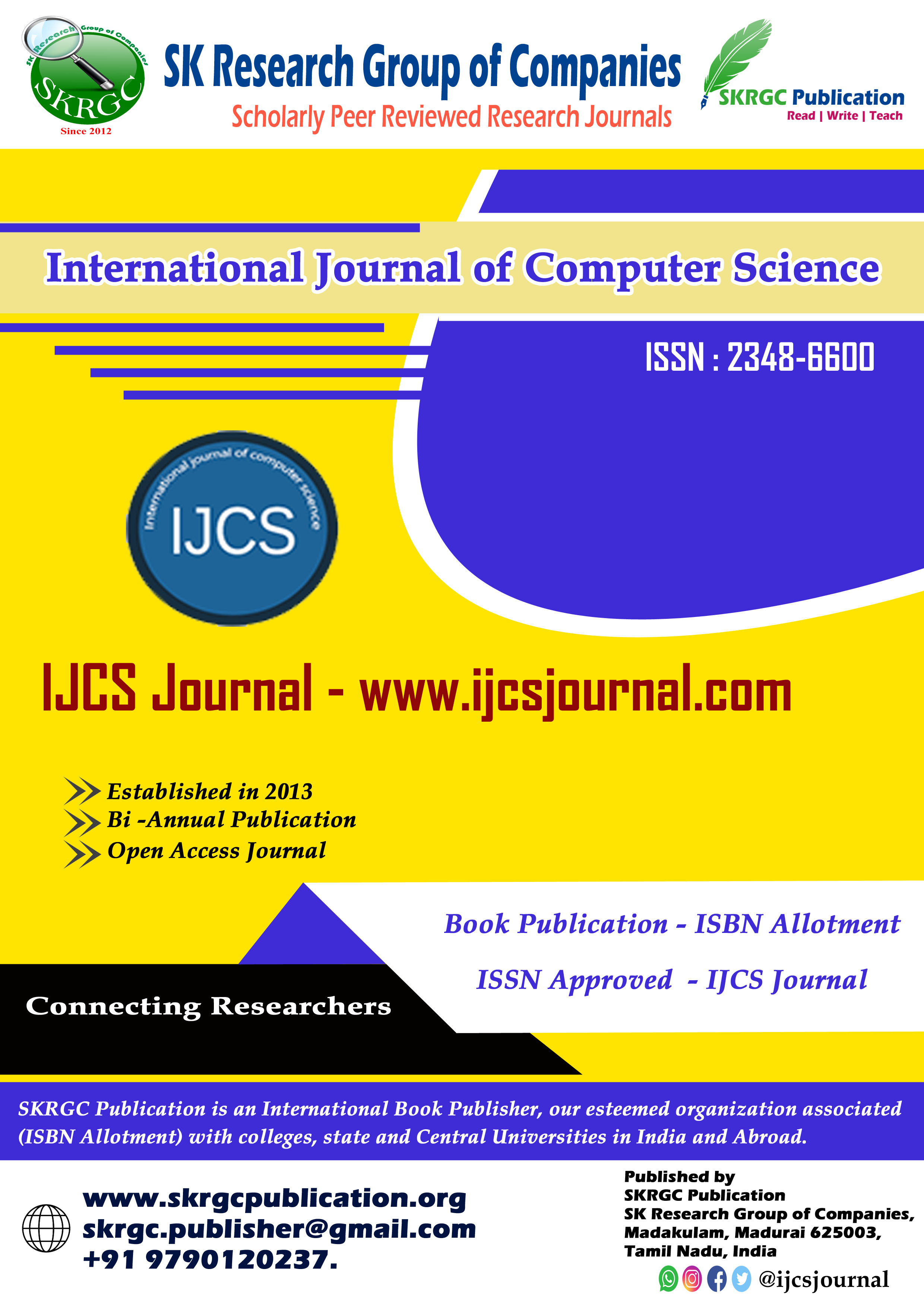SECURED ONLINE SHOPPING USING AUTHENTICATION HIDING METHOD
International Journal of Computer Science (IJCS) Published by SK Research Group of Companies (SKRGC).
Download this PDF format
Abstract
Authentication Hiding Method for Web portal, which is implemented in ASP .NET platform. This website is implemented with basic features that are present in every online shopping sites. Main idea of this project is to sell products under different category through online. As the usage of internet is growing day by day users are interested in using internet for buying and selling goods which is a time saving process. In recent years sites like snap dialect had grown rapidly in this field. This application is designed with features like placing orders, add modify delete and cancel orders from the list, subscription option for receiving latest deals to email. This project secured online shopping system that gives the Internet users the confidence to use their online shopping cards or their credit cards without the need to worry about the hackers or the online shopping frauds. This is a web application used by a company to sell products through internet. Customer can select and place order for a product, which are then delivered to the customer. Upon the delivery of the product customer is expected to pay. Extending the original database for sensitive item set hiding is proved to provide optimal solutions to an extended set of hiding problems compared to previous approaches and to provide solutions of higher quality. Moreover, the application of binary integer programming enables the simultaneous hiding of the sensitive item sets and thus allows for the identification of globally optimal solutions.
References
[1] Agift, A., Rekha, V. and Nisha, C. (2014), “Consumers attitude towards online shopping”, Research Journal of Family, Community and Consumer Sciences, Vol. 2 No. 8, pp. 4-7.
[2] Akroush, M.N. and Al-Debei, M.M. (2015), “An integrated model of factors affecting consumer attitudes towards online shopping”, Business Process Management Journal, Vol. 21 No. 6, pp. 1353-1376.
[3] Alam, M.Z. and Elaasi, S. (2016), “A study on consumer perception towards e-shopping in KSA”, International Journal of Business and Management, Vol. 11 No. 7, p. 202.
[4] Alam, S. and Yasin, N.M. (2010), “What factors influence online brand trust: evidence from online tickets buyers in Malaysia”, Journal of Theoretical and Applied Electronic Commerce Research, Vol. 5 No. 3, pp. 78-89.
[5] Al-Debei, M.M., Akroush, M.N. and Ashouri, M.I. (2015), “Consumer attitudes towards online shopping: the effects of trust, perceived benefits, and perceived web quality”, Internet Research, Vol. 25 No. 5, pp. 707-733.
[6] Aziz, N.N.A. and Wahid, N.A. (2018), “Factors influencing online purchase intention among university students”, International Journal of Academic Research in Business and Social Sciences, Vol. 8 No. 7, pp. 702-717, doi: 10.6007/IJARBSS/v8-i7/4413.
[7] Banerjee, N., Dutta, A. and Dasgupta, T. (2010), “A study on customers’ attitude towards online shopping-An Indian perspective”, Indian Journal of Marketing, Vol. 40 No. 11, pp. 36-42.
[8] Bianchi, C. and Andrews, L. (2012), “Risk, trust, and consumer online purchasing behaviour: a Chilean perspective”, International Marketing Review, Vol. 29 No. 3, pp. 253-275, doi: 10.1108/02651331211229750.
[9] Bilgihan, A. (2016), “Gen Y customer loyalty in online shopping: an integrated model of trust, user experience and branding”, Computers in Human Behavior, Vol. 61, pp. 103-113, doi: 10.1016/j.chb.2016.03.014.
[10] Casalo, L., Flavián, C. and Guinalíu, M. (2008), “The role of perceived usability, reputation, satisfaction and consumer familiarity on the website loyalty formation process”, Computers in Human Behavior, Vol. 24 No. 2, pp. 325-345, doi: 10.1016/j.chb.2007.01.017.
Keywords
Authentication, Online Shopping, Binary Integer Programming Model.

